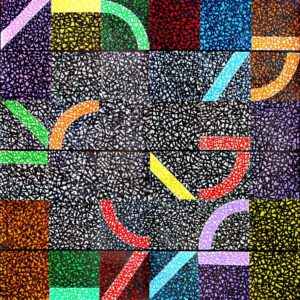Stylization is a fascinating aspect of the creative process that connects an artist’s initial impressions of the world with their subsequent expression of those experiences. It is a powerful tool that can convince others and inspire nations for centuries. Through the concept of language, various symbols convey different meanings and emotions, speaking directly to the human soul. Andrey Tsers, an artist deeply intrigued by stylization, has harnessed this power to create art that transcends boundaries and elicits a symphony of visual dramas.
In his artistic journey, Tsers delves into the multifaceted nature of language, exploring diverse media such as sound, color, gesture, and line to express a plethora of meanings. Each medium has its own set of primary elements, and Tsers skillfully combines them to produce an infinite array of visual representations. This thoughtful amalgamation allows him to communicate complex emotions through seemingly simple forms, creating a visual language that resonates deeply with viewers.
Geometry is another realm that captivates Tsers’ artistic exploration. Through geometric shapes, he masterfully visualizes the space-time relationship between different events. Geometrical forms provide a means to simplify and organize our perceptions of a constantly changing reality, presenting an organized framework that guides the eye and mind through the complexity of the world.

One of Tsers’ notable projects, “MUSES,” is an installation that comprises five elements: a clay source model and four geometrically stylized two-sided paper sculptures. Each paper sculpture represents layered profiles of the clay source model from every quarter view. Placed around the central sculpture, these paper sculptures invite viewers to compare the geometrical stylization with the corresponding view of the clay model. This unique dialogue between the 3-D and 2-D aspects of the same image encourages an exploration of form and representation, leaving room for a multitude of interpretations.

Another captivating series by Tsers is “Alphabets,” which consists of nine paintings engaged with a linear translation of each primary form: the horizontal/vertical, diagonal, and curve. These primary lines represent the three beginnings of a visual language. Tsers playfully and intuitively selects and arranges these primary lines, evoking a likeness to letters from the alphabet. The combinations formed by these lines create a plethora of visual dramas, transcending the boundaries of intellectual exercises and becoming calligraphic and poetic expressions.
In “Alphabets,” Tsers adheres to the ground rule that characters cannot touch, resulting in a unique set of six with a larger shape in the background, forever fixing the arrangements like insects in amber. This deliberate structuring adds a layer of depth to the compositions, inviting viewers to decipher the hidden meanings and appreciate the interconnectedness of the visual elements.
Throughout his artistic journey, Andrey Tsers stays dedicated to the exploration of stylization, drawing inspiration from language, geometry, and the primary forms of the square, triangle, and circle. These elements form the foundation of his visual language, producing a rich tapestry of artistic expressions that resonate with viewers on both intellectual and emotional levels.
Tsers’ artistic projects not only showcase his profound understanding of stylization but also offer a glimpse into the infinite possibilities that arise from combining different elements. Through his thought-provoking artworks, he invites viewers to embark on a journey of introspection, where the boundaries of language and perception blur, and a new world of artistic interpretation emerges. Andrey Tsers’ unique artistic language becomes a vessel for communication, transcending words and offering a timeless and universal medium to convey emotions and ideas.
